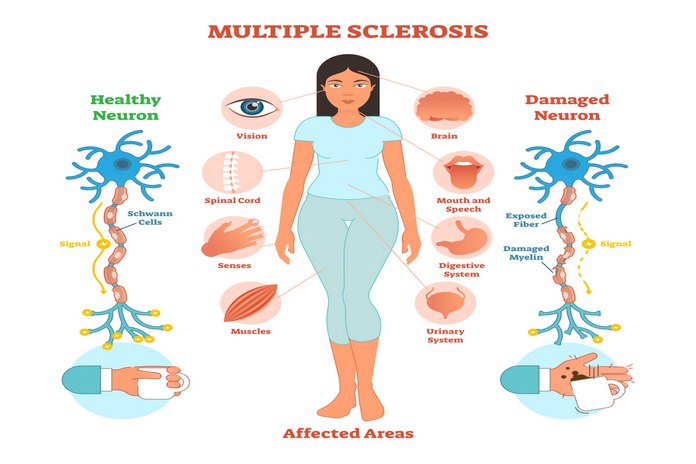Prognosis Of Multiple Sclerosis
In the case of multiple sclerosis, there are fortunately lower risks of death in the patients, but at the same time, the bad news is that there is no proper cure available for multiple sclerosis. As far as the prognosis of multiple sclerosis is concerned, there is good news about stretching and improving the life expectancy in the patients. Moreover, there is no known cure that is yet present on hand for multiple sclerosis. As multiple sclerosis is not fatal, so the life expectancy of the people living with multiple sclerosis somehow have a similar life expectancy as of the general population only if the patient is receiving the necessary treatment. According to the researches on the multiple sclerosis patients, the life expectancy of the people having multiple sclerosis reduces to about seven years in comparison with the general population. The majority of the people might not experience this reduction in their life expectancy due to the proper treatment that they are receiving.
Apart from the cases of patients that are having severe multiple sclerosis, the prognosis for life is mostly good for ordinary people with multiple sclerosis. Moreover, if people have some other medical conditions in addition to multiple sclerosis, then the quality of their life decreases. The people go through pain, inconvenience, and discomfort due to the symptoms that they are having due to multiple sclerosis. On the other hand, people having severe multiple sclerosis might also have some disability, but the chances of severe disability are mostly fewer. For evaluating the prognosis of multiple sclerosis, there is another way of examining how the disabilities resulting from multiple sclerosis affect the patient’s quality of life. Almost two-thirds of patients with multiple sclerosis can walk without the aid of a wheelchair after two years of having their treatment and diagnosis.
While some people need crutches or a cane to stay ambulatory and help themselves, some people also use an electric wheelchair or scooter to help them in managing fatigue and balance difficulties. It is very difficult for the medical specialists to predict accurately that how multiple sclerosis will progress in every patient. The severity of multiple sclerosis is different from one person to another. Multiple sclerosis does not severely affect almost 45 percent of the people having the disease, i.e., they do not suffer from any kind of serious disability. The studies also confirm that most of the patients undergo a certain amount of progression in their disease with the passage of time. To determine or predict the prognosis of a patient, the doctors make the patients understand the risk factors that might cause the progression in the disease.
The risk factors like being over the age of 40 years, being a female indicate the higher risks of the patients in developing more severe symptoms. The initial symptoms in the patients of multiple sclerosis affect many parts of the body of the patients, and it also affects the mental functioning, motor control, and the urinary control. The loss of power on the basic voluntary movements indicates the progression of the disease in the patient. The main factor that affects the prognosis is the type of multiple sclerosis that the patient is going through. In the case of primary progressive multiple sclerosis, there is a decrease in the function of the body parts with or without the presence of relapses and remissions. The pattern of progression in almost all multiple sclerosis patients is that there are some periods of inactive decline in the disability, which shows lesser signs of the disease.
For the relapsing types of multiple sclerosis, there are many guidelines that might help in predicting the prognosis in patients. The people suffering from the condition of multiple sclerosis might get better if they experience:
- Fewer symptom attacks at the beginning of the few years after the diagnosis of multiple sclerosis
- A full recovery from the symptom attacks
- The appearance of neurological exam results as normal almost after five years of the diagnosis
- A longer interval of time passing between attacks of the symptoms
- The symptom associated with sensory problems such as vision loss, tingling, and numbness start appearing less frequently
Even though the large number of patients living with multiple sclerosis have normal life expectancy but it is very difficult to even for the doctors to predict that if the symptoms will go away or it will worsen with the passing time. The reason for not being able to predict the future of the patients with multiple sclerosis is that the disease varies a lot from one person to another person, but in most of the cases, it is not fatal. Multiple sclerosis not only lessens the life expectancy rates in the patients but also greatly affects the quality of life in them. The symptoms of multiple sclerosis adversely affect the lifestyle of the affected persons and also becomes hard for caregivers in the long run if the person has some disabilities.

